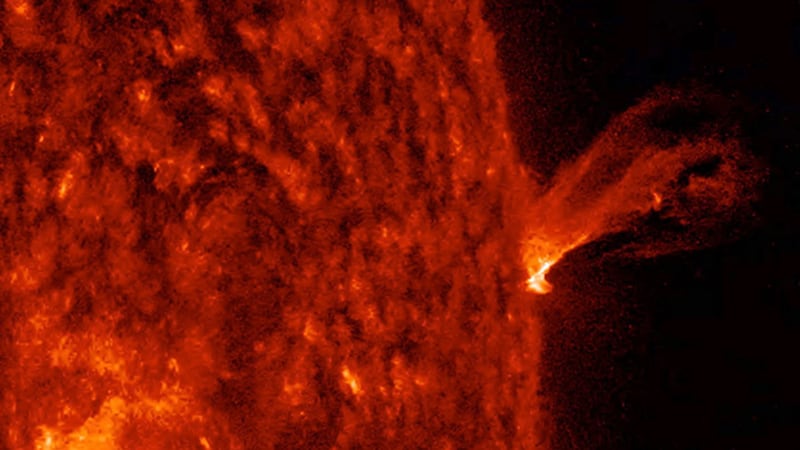A spacecraft operated by Nasa has captured incredible footage of a minor eruption on the surface of the sun.
The close-up, which was filmed on August 13 by the Solar Dynamics Observatory (SDO) during a two-hour period, shows the flare rising on the edge of the sun before falling back into it.
Minor eruptions can be hard to spot especially if they occur towards the middle part of the sun and are likely to be seen if they occur along the sun’s edge, also known as the limb.
The SDO captured the eruption in extreme ultraviolet light as the naked eye cannot perceive certain wavelengths of sunlight.
Dean Pesnell, the project scientist at SDO, said: “Certain wavelengths either do not make it through Earth’s atmosphere or cannot be seen by our eyes, so we cannot use normal optical telescopes to look at the spectrum.”
At its peak, the sun’s plasma – which is a hot ball of gas made up mostly of hydrogen and helium – rises several times the diameter of Earth at speeds of up to about 335,500 mph (540,000 km/h).
SDO was launched in February 2010, with the aim to understand the sun’s influence on Earth by studying the solar atmosphere.
By knowing more about what occurs in the sun, scientists hope to predict when powerful solar events such as coronal mass ejections – which involves a significant release of plasma from the sun’s corona – and solar flares – high energy particles and radiation emitted from the sun – may occur.


